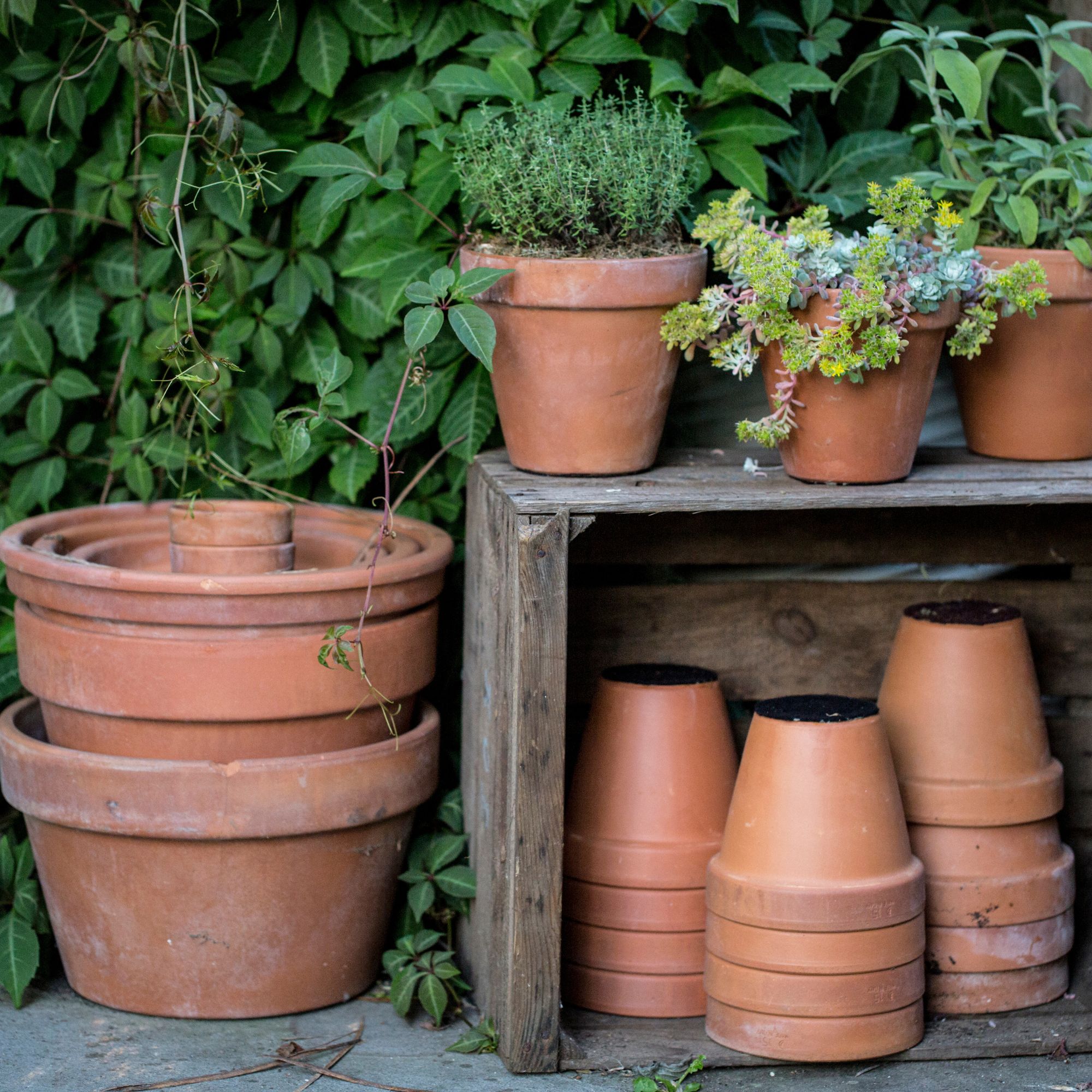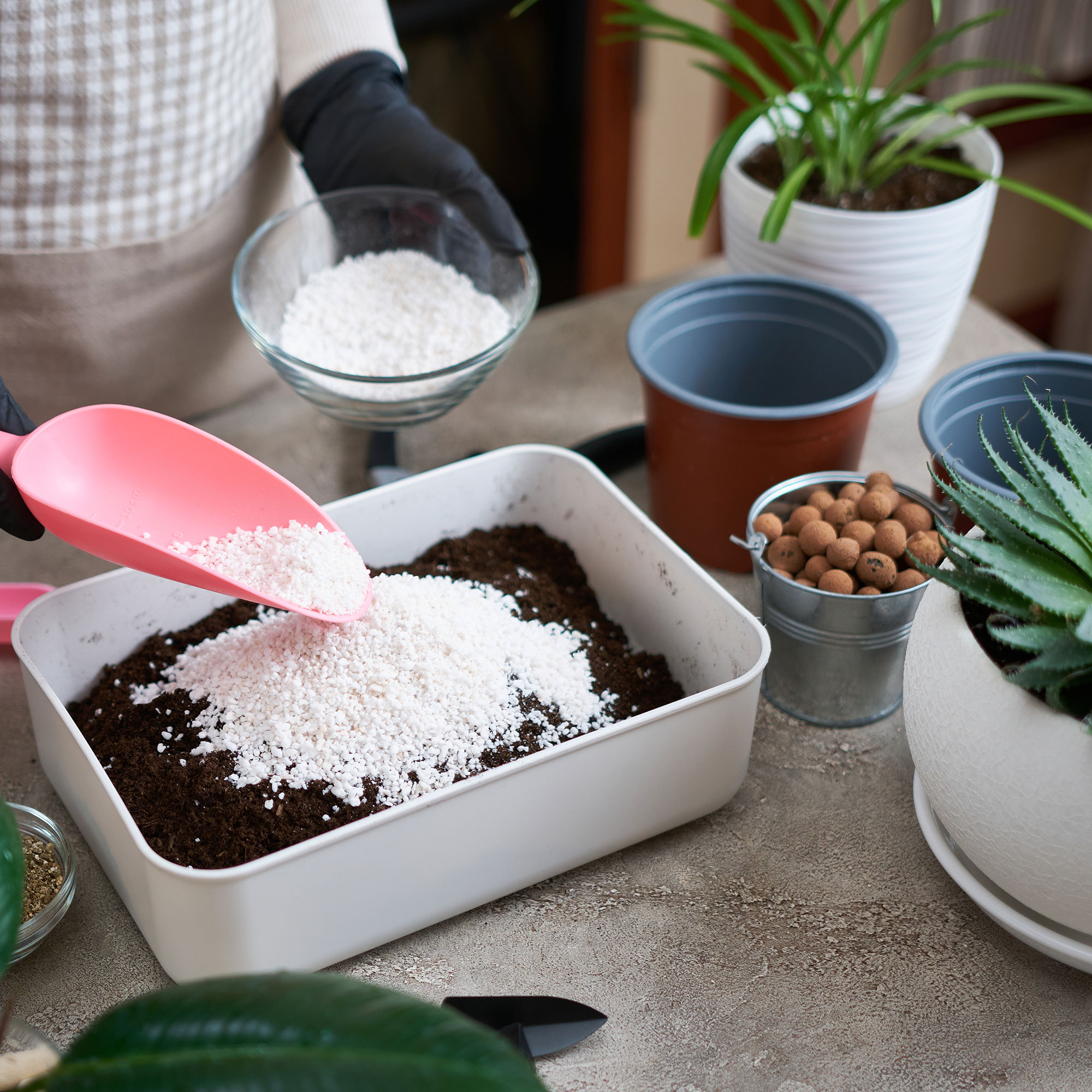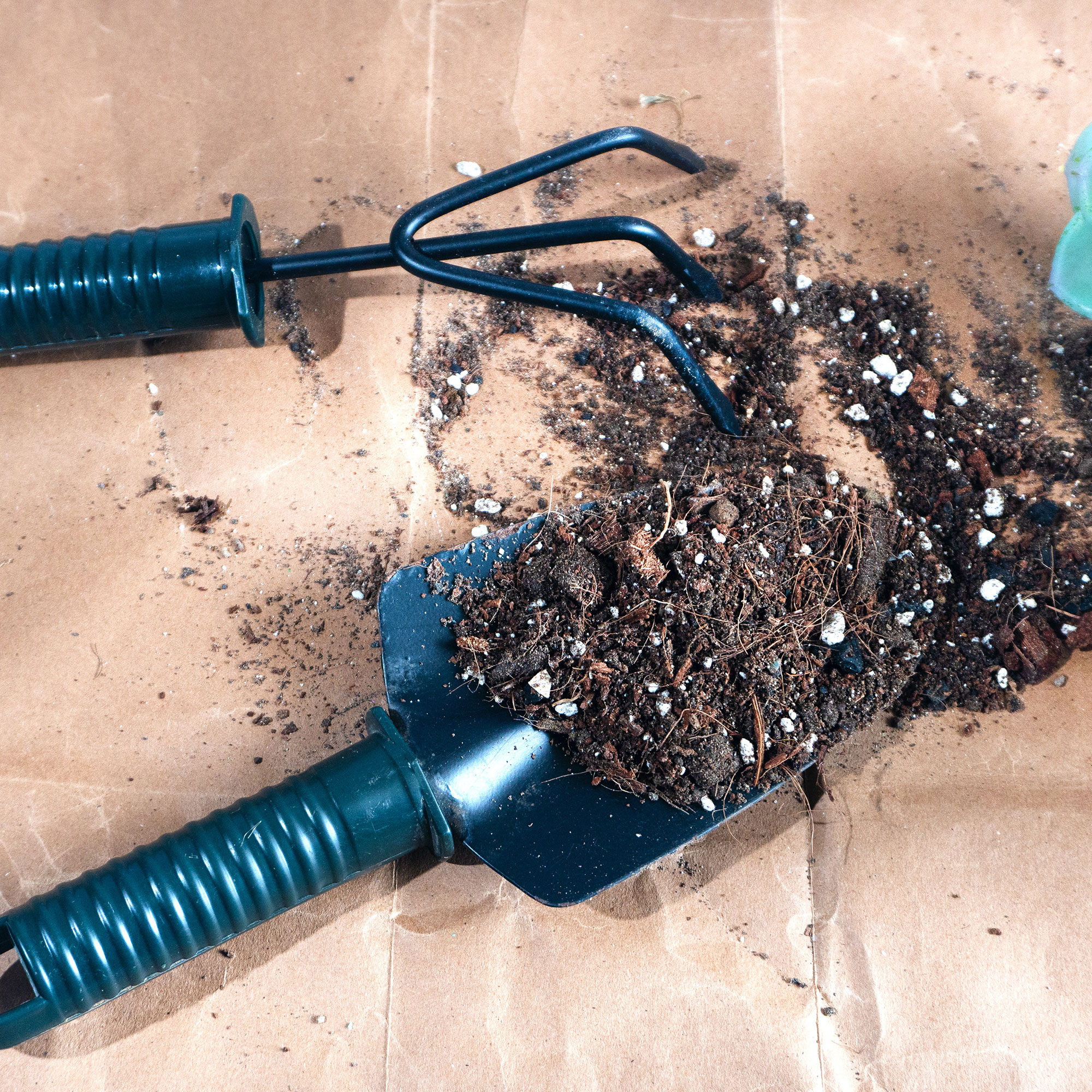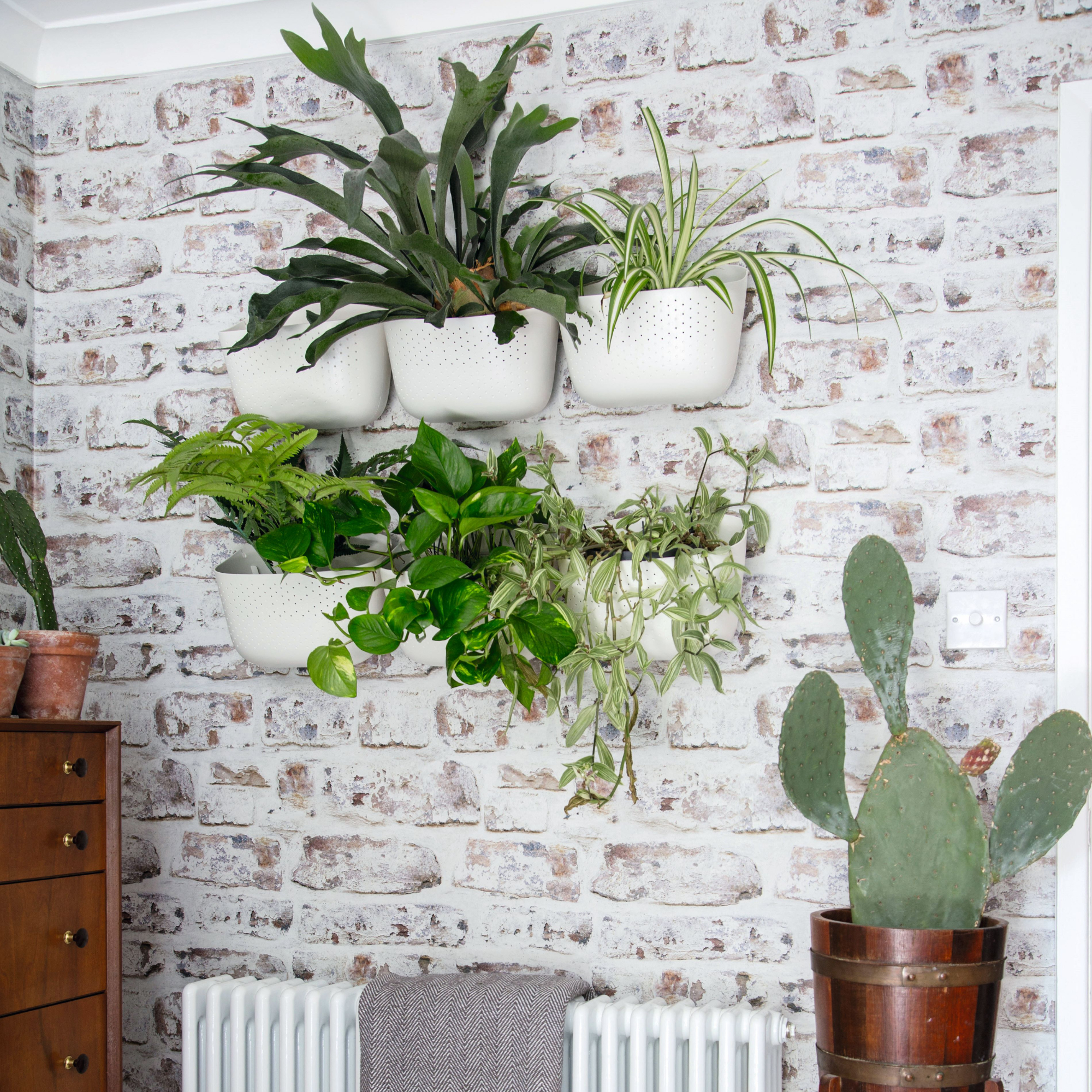
Whether you’ve been gardening for years or are looking to become that bit more green-fingered, you might have wondered exactly what perlite is and what sorts of plants you should be using it for. And thankfully the experts have broken it down for us.
So, if you're wondering if you should be using perlite in your container garden ideas, when planting up pots here’s everything you need to know about the material.
What is perlite?
Perlite is a really interesting material. Essentially, it is made from volcanic glass which is heated until it expands, thus making it really lightweight and highly absorptive. In fact, Steven Bell, Managing Director at Paving Shopper often ‘describes it as “nature’s answer to Styrofoam” because it’s so light and airy, yet incredibly durable.’
It is used in gardening, and the horticulture industry more generally, ‘to add drainage and aeration to composts, to help with water retention and for the propagation of plants, particularly by cuttings and seed,’ says Kelly Dyer, Indoor House Plant Expert at Patch Plants. ‘It also has a neutral pH, is sterile and non-toxic.’
Because of this, ‘its porous structure allows for excellent airflow, which prevents soil compaction and promotes healthy root growth,’ Steven explains. ‘In my experience, this is particularly important for potted plants, where compacted soil can lead to root rot.'

‘From a scientific standpoint, perlite’s high porosity means it can hold a lot of water relative to its weight, but it also releases that water readily, which is why it’s so effective in preventing waterlogged soil. Think of perlite as the lungs of your soil, allowing it to breathe freely,’ Steven continues. So, if you happen to be struggling with overwatering plants or waterlogged roots in some of your houseplants, this could be a great solution and a gardening job to try out next.
It’s worth saying, it can be used for indoor houseplants and outdoors, whether that be in potted plants, flowerbed ideas or even your lawn. For example, perlite can help to aerate lawns that are prone to drought over the warmer months or that struggle with poor aeration. It can also help to improve the texture of heavy clay soils and even help to create a moist environment for seeds and cuttings.
What are the downsides of perlite?
One of the biggest downsides of perlite is the fact that ‘it is extremely dusty when dry and can be hazardous to breathe in,’ Kelly admits. In a worst case scenario, this could potentially cause eye or respiratory issues. So, it’s incredibly important to ensure that you dampen it down with water before pouring or scooping it out. In addition to this, you can wear a dust mask and safety goggles while handling it to ensure that you are completely protected.
‘It's also incredibly lightweight, which means it can blow away in strong winds or float if you overwater your plant,’ Morris Hankinson, Director of Hopes Grove Nurseries, warns. This means you’ll want to avoid using it during particularly windy or gusty weather.
What plants should you use it for?
Perlite can be useful for a variety of different plants, as it can help with drainage for certain ones and moisture retention for others. ‘It is also especially useful for those plants that thrive in dry conditions,’ suggests Luke Dejahang, CEO and Gardening Expert at Crown Pavilions.

This essentially includes plants such as cacti and succulents, orchids, monstera, philodendron and medinilla, the experts agree. ‘It is particularly effective for plants such as cacti and succulents because it can retain water without over-saturating them,’ Morris details. Therefore, if you’ve been having a difficult time with any of these houseplants, you might want to give perlite a try to see if it helps.
‘Perlite is also great for sowing seeds or rooting cuttings because it helps create a light, airy growing medium that encourages strong root development,’ says Nadezhda Yaneva, Gardening and Lawn Maintenance Expert at Fantastic Gardeners.
Do I really need perlite?
Whether or not you add perlite to your soil is ultimately a personal preference. However, it can help with drainage and aeration, meaning if you typically struggle with either of these issues, it can definitely be a useful addition.
Depending on the size of your planting project and the bag you buy, perlite typically costs anywhere between around £6 and £20, making it a somewhat affordable addition to your gardening supplies, as well.

What's better, vermiculite or perlite?
While they both serve similar but slightly different purposes, ‘vermiculite is better for retaining moisture and is often used in seed-starting mixes or for plants that need consistent moisture,’ Steven explains. Whereas, ‘perlite, on the other hand, excels at improving drainage and aeration.’
And choosing which one to use usually comes down to what your plants need more – water retention or aeration. Typically, ‘vermiculite keeps things moist, while perlite keeps things airy,’ Steven points out.







